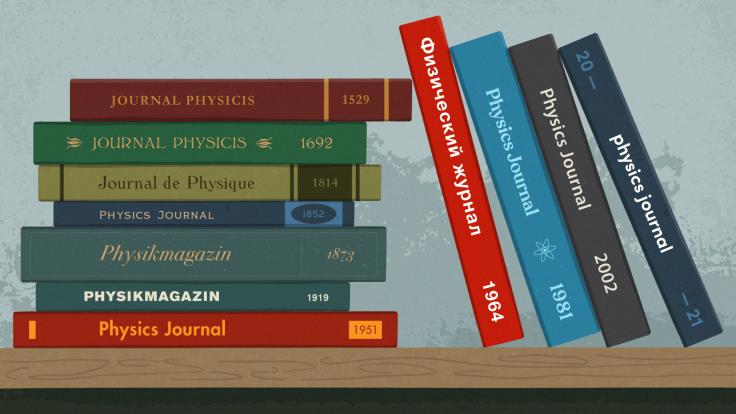
This collision event display, created by the CDF collaboration, shows a single top quark candidate event. Credit: CDF collaboration.
The top quark is the heaviest fundamental particle.
Fundamental particles are the most basic building blocks of matter; they cannot be broken into parts. Even though it is so small, the top quark is as heavy as a gold atom, which is made up in part of almost 200 protons and neutrons.
"We think the top quark might be special because it is so massive," said Bernd Stelzer, an experimental physicist on the CDF collaboration. "We want to look at it from all angles."
Fermilab physicists are examining the production, properties, and decay of top quarks to gain the most complete picture of the particle possible. They compare their observations to predictions made in the Standard Model of physics and in theories that build on that model.
The CDF and DZero collaborations at Fermilab released 25 new experimental results this summer that pushed top quark measurements to higher and higher precision, Stelzer reported at the Physics in Collision conference in Kobe, Japan, this week.
The tiny particle with a huge mass has inspired and factored into many theories, some of them wild.
In one theory, the three-dimensional world we experience is only one layer of a four-dimensional universe. The closer a particle that lives in the warped fourth dimension comes to our slice of life, the closer it is to the generation of mass. So, according to the theory, the top quark is so heavy because it is the closest fundamental particle.
Other physicists have suggested that the Higgs, the theoretical particle that gives other particles mass, is actually made up of pairs of heavy top quarks bound together.
Fermilab physicists recently made strides toward understanding the curious particle.
Fourteen years ago, the CDF and DZero collaborations discovered the top quark produced in particle-antiparticle pairs in Fermi National Accelerator Laboratory’s particle accelerator, the Tevatron. In March, CDF and DZero scientists announced the first observation of particle collisions resulting in single top quarks.
"The new single top quark sample can serve as a new compass to point us to new physics," Stelzer said.

A proton-antiproton collision can produce a single top quark in two different ways. Credit: DZero collaboration.
The collisions that create top quark pairs always behave the same way, but single top quarks are created in two distinct ways. The Standard Model predicts how often each of the two processes will create a single top quark, as do the many exotic theories about the tiny, tubby particle. Measuring the rates of these processes precisely will allow physicists to determine which theories came up with the right prediction.
A virtual helping hand
Collisions of protons and antiprotons in the Tevatron convert energy into mass, as described by Einstein’s famous equation, E=mc2. Accelerator operators accelerate particles to high energies and smash them together, which creates a spray of short-lived particles with a mass that corresponds to that energy.
When the collision energy of the machine corresponds to the mass of a particle, the rate of producing that particle in the collisions shoots up rapidly. This is called resonance production.
At an energy of about 80 GeV, the Tevatron produces a plethora of W bosons. When turned up to about 91 GeV, it begins to create Z bosons.
But there is no such recipe for top quarks.
The collisions that create both pairs of top quarks and single tops borrow energy from virtual particles. Virtual particles wink in and out of existence for only brief moments, but they affect interactions between particles around them.
The more massive a particle, the more infrequently it appears as a virtual particle. But even very massive particles can appear this way. That’s important, because an interaction needs a very large virtual particle to create a heavy top quark.
Physicists cannot predict the emergence of a virtual particle by the energy of the machine. Top quarks appear to lack resonance production.
At the conference, Stelzer also discussed efforts at the Tevatron to find evidence for resonance production of top quarks. This would point to top quarks being created in a new way not predicted by the Standard Model, without the help of virtual particles.
"That would be fantastic," Stelzer said. "It would be an unambiguous sign of new physics and would likely allow us to reveal the origin of the enormous mass of the top quark."
If CDF and DZero do not find this evidence of new physics, researchers will continue to search for it at experiments at the Large Hadron Collider at CERN.






